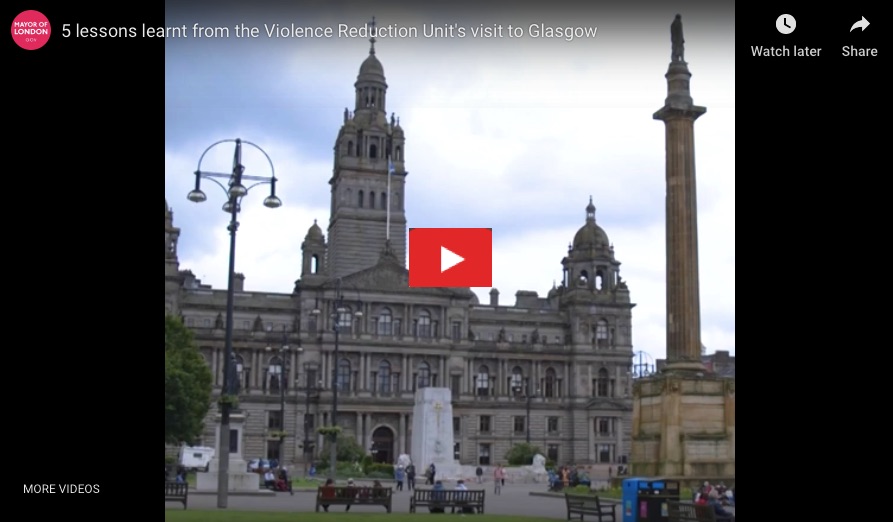.. DEMOCRATIC PARTICIPATION ..
Article by Joe Downy from the Strong Cities Network
Today, 83% of deadly violence occurs outside of conflict zones, with the majority of this violence concentrated in cities. Nation states have dominated the global political arena for centuries, but with more than half of the world’s population today residing in cities, it may be time to rethink who should be at the table when it comes to decisions on how we can reduce violence.

Video of Glasgow program
Recently, a coalition of cities and organisations, including the Strong Cities Network, have pledged action to help halve urban violence by 2030, in line with the UN Sustainable Development Goal 16.1 to ‘significantly reduce all forms of violence and related death rates everywhere’. Such a goal is undoubtedly ambitious, but cities hold a number of advantages over nations that may help to tip the balance in their favour. The gathering momentum of new city-based alliances such as C40 Cities, the Global Parliament of Mayors, United Cities and Local Governments, and the Strong Cities Network is proof of a shift away from solely state-dominated approaches to global issues to new, collaborative forms of decision-making between the national and the local level.
The challenge of reducing urban violence is not just limited to the act itself, but also in overcoming our perception that violence is inevitable. When violence is normalised in this way, it is seen as an inescapable part of everyday life which stymies any attempts to radically reduce it.
This is far from the truth. Cities all over the world have pioneered responses to their own complex and contextualised problems of localised violence, and there are important lessons and insights to be learned from one another.
(Continued in right column)
How can culture of peace be developed at the municipal level?
(Continued from left column)
In the early 2000s in Glasgow, Scotland, knife crime and homicide rates were double those of the national level, and Scotland itself was regarded among the most violent countries in the developed world. To help stem this, the city’s leadership established a specialist Violence Reduction Unit, which coordinated community outreach, educational and employment initiatives in the neighbourhoods most affected by violence. Under the motto ‘violence is preventable, not inevitable’, the city’s homicide rate halved within ten years, and the numbers continue to drop. Lessons learned from this programme are now being applied in London, which established its own Violence Reduction Unit last year.
In collaboration with local governments, Ecuador took a radical step in the way it was dealing with gangs in 2007 – looking beyond solely punitive approaches and starting to engage with them through new and innovative ways. Working relationships were established between gangs, law enforcement and local government, and members were encouraged to become positive community leaders. Grants were set up and incentives put in place, and gangs could apply for state funding if they fulfilled certain requirements to develop their own initiatives. This saw organic and unprompted partnerships develop between community actors and gang members, such as the Catholic University of Quito, which sponsored 15 gang members to study to become nurses. A decade later, homicide rates in the cities of San Domingo, Quito and Guayaquil had plummeted to a third of what they had been in the early 2000s.
In Oakland, California, which once ranked among America’s most dangerous cities, homicide rates have fallen by almost 50% since 2012, a drop which bucked the national trend in the same period, which has seen sharp increases in homicides in many major U.S. cities. This remarkable change has been attributed largely to collaboration between law enforcement, community actors and civil society. It was recognised early on that a law enforcement-led approach was not enough by itself, and was both financially unsustainable and sent the wrong message to the communities it was seeking to serve. Instead, by engaging with the wealth of community actors and violence prevention groups such as Caught in the Crossfire, the Khadafy Washington Project, and Cure Violence, whole-of-society and preventative approaches to tackling the issue were allowed to thrive. One of the most impressive examples of this was seen in the local ‘Ceasefire’ policing programme, which saw local actors collaborate with law enforcement to create a tailored strategy.
All of these approaches display the role that cities areand should be playing in helping to reduce violence. By engaging with communities, forming strategic partnerships with civil society, local organisations, businesses and their national counterparts, and treating violence as a preventable phenomenon, cities are setting the examples for nations to follow.